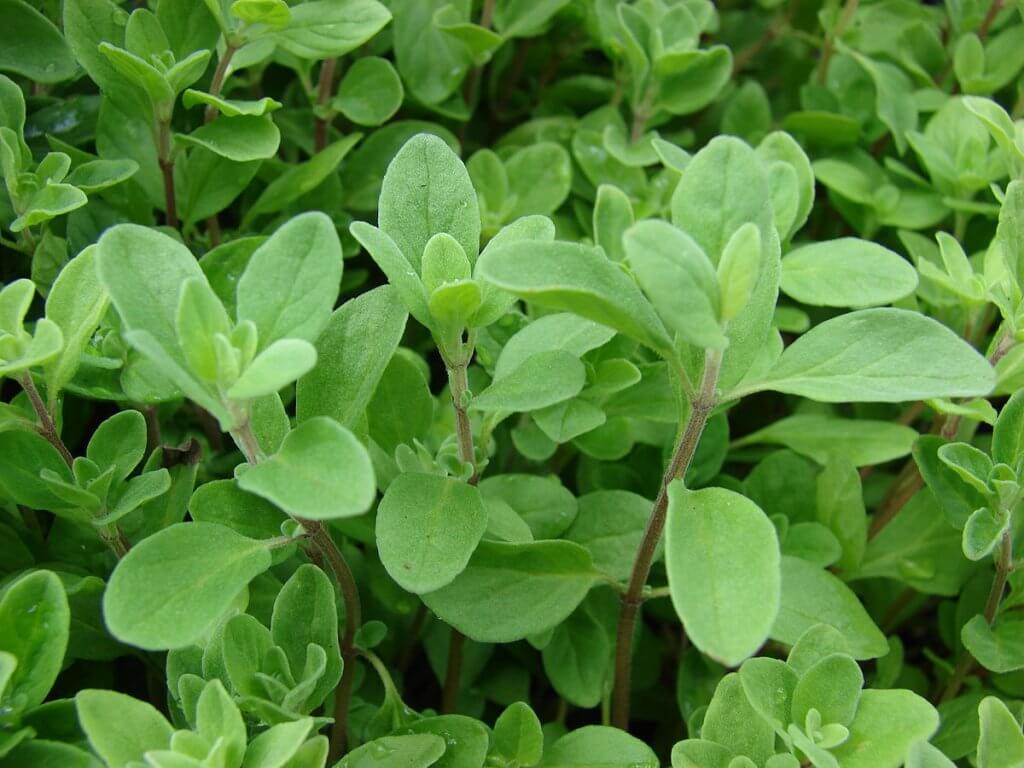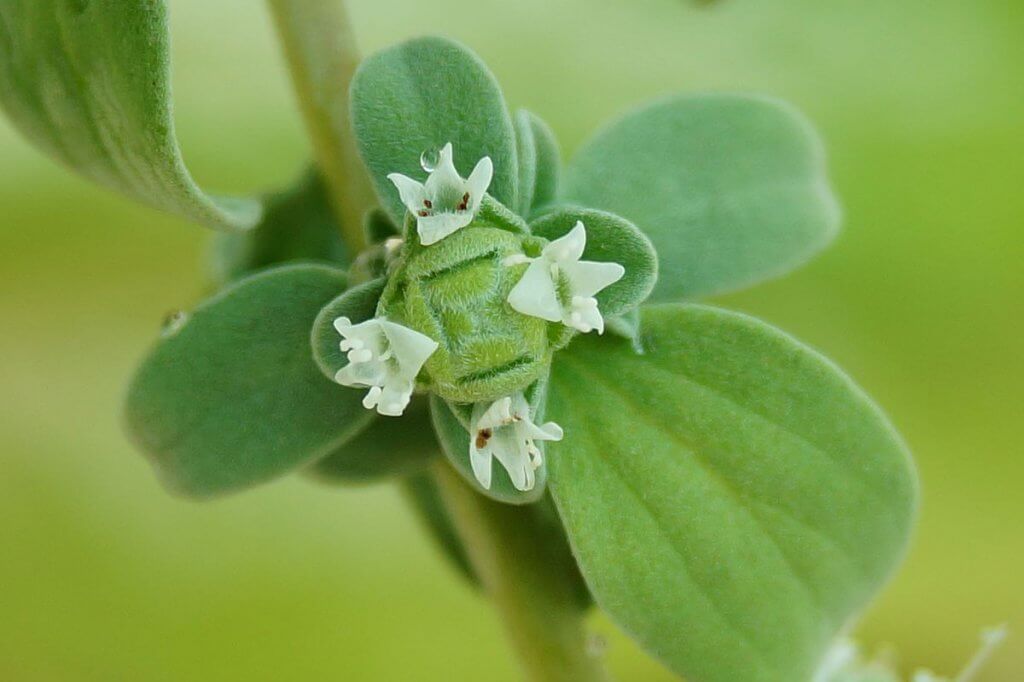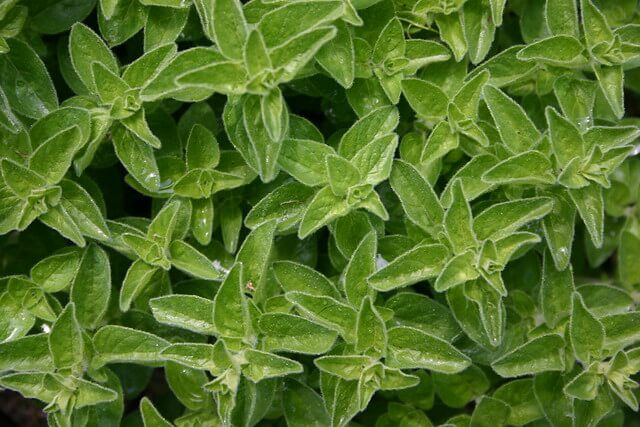Often confused for oregano, its cousin, marjoram (Origanum majorana) is a wonderful aromatic herb on its own. Marjoram is a perennial herb that’s native to Western Asia and the Mediterranean region. It’s cultivated all around the world for its culinary and medicinal benefits.

(Photo by: Forest & Kim Starr/Wikimedia Commons)
Edibility and culinary use
Marjoram is often used as a substitute for oregano in cooking. The taste is comparable to oregano’s but milder and sweeter with a gentle woodsy aroma. Marjoram is used to season soups, stews, marinades, salad dressings, sauces, meat, and vegetable dishes. It’s best to use fresh marjoram leaves in cooking because dried leaves tend to lose some of their flavor and aroma. Heat can also ruin their taste, so add them only towards the end of the cooking process.
Aside from being used as a cooking spice, marjoram also tastes wonderful as a tea. Brew fresh or dried marjoram leaves for a fragrant herbal tea that’s not only delicious but also healthy. The flowers can also be made into tea, however, this tea doesn’t taste as pleasant as the one made with leaves. Lastly, the aromatic seeds are used to flavor sweets, beverages, and desserts.
Health benefits
Marjoram has long been used as a folk herbal medicine. Marjoram is packed with valuable nutrients and antioxidants that are essential in maintaining health. It’s particularly rich in vitamin A, C, and K as well as calcium, iron, and manganese. You can add it into your diet by taking one or two tablespoons worth of leaves daily or drinking it as a herbal tea.

(Photo by: SKsiddhartthan/Wikimedia Commons)
This herb can soothe upset stomachs, treat colds, reduce excess gas, relieve cramps, heal gastric ulcers, and even boost your appetite. It’s also great for cardiovascular health as it lowers high blood pressure as well as stabilize irregular heart beatings due to anxiety and stress. For women, marjoram can help regulate the menstrual cycle, relieve PMS and menopausal symptoms, as well as promote breast milk production. Lastly, marjoram can regulate blood sugar levels for diabetes patients too.
Cultivation
Planting marjoram in your garden can give you some amazing benefits. It’s not only a valuable source of cooking spice and medicinal herb, but it also helps attract pollinator and other insects that feed on decomposing matters and harmful pests around the garden.
Even though marjoram is a perennial plant, it’s mostly grown as an annual because this plant is very sensitive to cold temperatures. It can survive on various soils, but it prefers well-drained sandy soil that mimics its native habitat. Marjoram prefers full sunlight exposure, but it can tolerate fluorescent plant lights. This plant is drought-resistant and doesn’t like too much moisture, it just needs to be watered once in a while so it doesn’t dry out.
Sow the seeds in early spring and lightly cover them with soil. They will germinate within 2 to 4 weeks. Once the seedlings are large enough to handle, transfer them to their permanent location in early summer. Be sure to give around 1 ½’ space between each plant. It’s recommended to plant marjoram in containers so they can be brought inside in the fall and winter as cold temperatures can harm them.
The plants should be ready for harvest 60 days after sowing or after the plant is 4” to 6” tall. Cut the leaves right before use to preserve their taste and aroma. Regular harvests encourage faster plant growth.

(Photo by: Rhonda Fleming Hayes/Flickr)
Cautions
As a cooking spice, marjoram poses no risk at all. For medicinal consumption, it’s safe in small doses. However, there’s some concern that long-term consumption in large doses may harm the liver and kidneys. Pregnant women shouldn’t consume this herb in medicinal amounts as it may induce menstruation. Taking medicinal amounts of this herb can increase the risk of bleeding, so stop consumption at least 2 weeks before a scheduled surgery.
Conclusion
While marjoram is already well-known as a cooking spice, it’s healing abilities are still underrated. When consumed regularly, marjoram can work wonders for the health of your body and mind. It can help heal a wide range of ailments, from the common cold to diabetes. Its sedative and mild antidepressant effects are also gaining more recognition for healing psychological and neurological ailments. So, try including it in your diet for a healthier life.
---------------
Writen by Cornelia Tjandra
Cornelia is a freelance writer with a passion for bringing words to life and sharing useful information with the world. Her educational background in natural science and social issues has given her a broad base to approach various topics with ease. Learn more about her writing services on Upwork.com or contact her directly by email at cornelia.tjandra@gmail.com
Many of our readers find that subscribing to Eat The Planet is the best way to make sure they don't miss any of our valuable information about wild edibles.
See our privacy policy for more information about ads on this site






